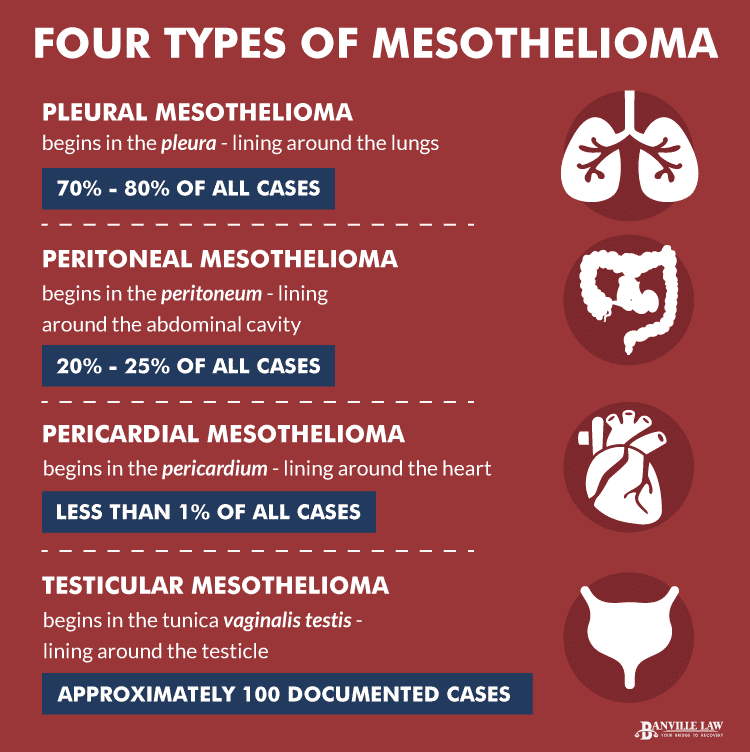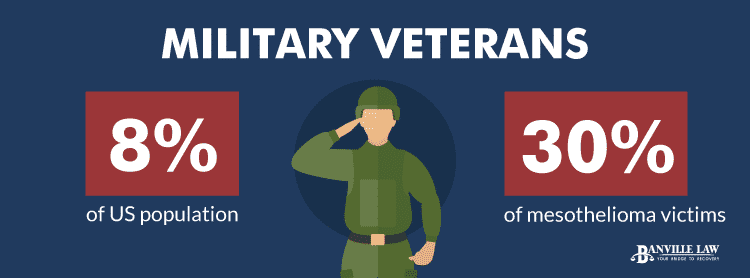Thousands of employers used the dangerous mineral asbestos for decades. Today, the medical community is certain: asbestos exposure causes mesothelioma, a rare cancer that spreads rapidly. Millions of workers were put at risk unnecessarily:
After waves of contentious litigation, many of the employers and suppliers who knowingly subjected their workers to asbestos exposure have gone bankrupt, but financial compensation is still available.
Our experienced New York asbestos attorneys want to fight for your legal rights. Schedule your no-obligation free consultation today by filling out the contact form or giving our local law office a call.
Thousands of people have come down with mesothelioma, a rare and aggressive form of cancer, because they were exposed to asbestos fibers in the workplace. Thankfully, many of these patients are able to find the financial support they need by pursuing compensation in an asbestos-related mesothelioma claim.
Are you familiar with the mesothelioma tv commercial? If not, check out our link to learn more.
Researchers agree that asbestos is only dangerous when disturbed. The mineral is made up of tiny fibers that cling together, resembling a horse’s tail. While many homes still have asbestos ceiling tiles or insulation, the fibers should stay bonded to each other, presenting little danger.
Only when the asbestos-containing product is broken or disturbed in some way is there a risk of the fibers breaking apart and being released into the air. That’s when asbestos becomes dangerous, but short-term asbestos exposure usually doesn’t lead to mesothelioma or asbestos-related diseases. Most of the people who have developed mesothelioma were exposed to asbestos every day, over the course of years, breathing in loose fibers at work.
Long-term asbestos exposure is the real risk. When someone breathes in asbestos fibers every day for decades, fragments of the mineral can eventually reach the lungs. When swallowed, the fibers can enter the intestinal tract. Once deep inside the body, asbestos fibers can accumulate and irritate the membrane linings of organs. Such buildup and irritation significantly increase an individual's risk of developing asbestos-related diseases such as mesothelioma.

There are actually four types of mesothelioma, although some forms of the disease are far more common than others. Before we cover these four types of mesothelioma, note that each variation of the cancer begins in the layers of tissue that cover our internal organs. This tissue is known as mesothelium, which is how mesothelioma got its name.
The fourth type of this cancer, testicular mesothelioma, may start in the tunica vaginalis testis, a pouch of tissues surrounding the testicles. Mesothelioma in the testicle lining is extremely rare, even less common than pericardial mesothelioma. In fact, only around 100 cases of the disease have ever been reported, according to Taiwanese researchers at the Song-Shan Armed Forces General Hospital.

The majority of mesothelioma cases are caused directly by asbestos exposure. As scientists in Medscape General Medicine report, about 80% of mesothelioma tumors that begin in the lung pleura are attributed to asbestos, while 50% of the less-common abdominal cavity tumors are.
Certain industries relied on asbestos as an industrial material for over a century:
The risk of exposure to asbestos was not isolated to these industries. Since much of the country’s industrial machinery was built using some level of asbestos, it’s probable that workers throughout the trades were exposed to countless asbestos-containing materials. At one point, anyone working on the floor of a machine shop was probably exposed to a certain degree of asbestos fibers.
The risk of asbestos exposure was nowhere higher than in the military, especially in the Navy. Despite representing only 8% of the American population, military veterans account for around 30% of all mesothelioma diagnoses. That’s still true today.
During World War II, and for decades after that conflict, the Navy’s use of asbestos-containing materials became pervasive. Asbestos fibers came to insulate pipes, coat the outside of boilers and composed key components in pumps and valves. Both sailors and shipbuilders literally spent their lives surrounded by asbestos, breathing in the deadly mineral’s fibers whenever they were released into the air.

This practice was reduced during the 1970s, after scientists had conclusively linked asbestos to a number of debilitating lung conditions. However, as the Virginian-Pilot reports, the Navy began using asbestos again – even after the evidence had become overwhelming – in violation of its own safety policies. The military went so far as to issue gag orders to shut workers up.
Today, no region of America has been hit harder by the asbestos crisis than the Hampton Roads area of Virginia, home to Naval Station Norfolk. More people develop and die from mesothelioma in Hampton Roads than anywhere else. In fact, the rate of mesothelioma diagnoses in Hampton Roads is 700% higher than the nation as a whole.
Many older homes still contain asbestos products such as flooring, tiling, and insulation. Public safety experts assure homeowners that these remaining asbestos materials won’t present a significant risk in most cases.
Certain types of asbestos are more friable than others, according to Oregon State University. The types of asbestos used to make floor tiles, for example, don’t crumble easily. Insulation materials that can be sprayed, on the other hand, are extremely friable. In short, certain applications of asbestos likely create a greater risk of exposure than other applications. Most homeowners, though, shouldn’t worry. While many older homes were built with asbestos-containing products, leaving the material alone, rather than trying to have it removed, is probably the safer option. Remediation efforts tend to increase the risk of disturbing asbestos, releasing fibers into the environment and leaving workers and residents vulnerable to exposure.
That doesn’t mean remediation is always a bad idea, but experts believe that removal should be reserved for cases in which asbestos-containing products have already been damaged or made friable for some reason.
New York State is home to 21 naturally occurring asbestos deposits, according to data from the United States Geological Survey. While mining of the mineral was more extensive in the neighboring state of Vermont, two prospects were explored in New York close to the Vermont border.
In fact, US asbestos exposure use may have started in New York, as the NYC-based Johns-Mansville Corporation first began making insulation and construction products in 1858. The City’s shipyards, from Brooklyn Navy Yard to GMD Shipyard, exposed thousands of workers to high levels of asbestos throughout the 19th century. Exposure and associated conditions may be most prevalent in Queens, where much of New York’s industry was based.
Today, New York remains home to more asbestos-related deaths than almost any other state. According to Asbestos Nation, a project of the Environmental Working Group, an estimated 868 people die of asbestos-related medical conditions every year in the State of New York. The majority of these fatal illnesses, around 74%, are classified as lung cancer, but not as mesothelioma. In fact, mesothelioma itself only accounts for about 19% of the asbestos-related fatalities in New York.
Another well-known example of widespread asbestos exposure in New York City comes from one of the darkest days in American history: September 11, 2001. As CityLab reports, somewhere between 300 and 400 tons of asbestos materials were used to construct the World Trade Center’s two towers. When those towers fell, the borough of Manhattan was inundated with a deadly cloud of cancer-causing chemicals. Asbestos was one of them, along with mercury and particles of fiberglass. First responders who rushed to help survivors of the attack soon began coming down with respiratory ailments, a collection of pulmonary disorders informally referred to as “World Trade Center cough.”
In order to adequately compensate emergency responders and residents who were harmed in or because of the World Trade Center attacks, Congress established the September 11th Victim Compensation Fund. Claims for compensation can still be filed today; the fund has been re-authorized to pay out settlements until December 18, 2020. Mesothelioma ranks among a number of cancer conditions that are eligible for compensation.
Historically, New York has served as a hub for asbestos litigation, in large part because many of the companies that used asbestos are headquartered in the City. New York may also be a better jurisdiction for plaintiffs who seek compensation. While some states have chosen to restrict the rights of mesothelioma patients, New York’s legislature has actually moved to expand those rights further.
Most notable is the State’s use of a “two disease” rule, which allows patients who developed asbestos-related diseases, and then were subsequently diagnosed with mesothelioma, to file two separate lawsuits for compensation. To speed up the litigation process for patients with advanced cases of mesothelioma, New York’s Supreme Court has even established separate trial dockets to expedite the pursuit of compensation.
The symptoms of malignant mesothelioma depend almost entirely on where the cancer has originated:
As we can see, many of these health effects are what doctors call “non-specific”; they can be caused by numerous other conditions, including many benign disorders that are more common than cancer. For this reason, patients and physicians often chalk up the initial symptoms to less serious conditions. Pleural mesothelioma, for example, is often confused at first with other respiratory diseases, like pneumonia or asthma.
Diagnosing malignant mesothelioma can be extraordinarily difficult. Despite its surprisingly aggressive nature, the cancer is characterized by a very long latency period. Symptoms only begin to develop long after the patient’s initial exposure to asbestos. The gap between exposure and disease identification can be decades.
Estimates differ, but the average latency period is probably somewhere around 30 to 40 years after asbestos exposure. Individual cases show more variation, from a low of about 10 years to a high around 50 years. This extremely long latency period explains why most cases of mesothelioma are only diagnosed at an advanced stage, making treatment options limited.
Like all forms of cancer, mesothelioma can metastasize, spreading from the place where it began to affect other organs and body systems. In general, mesothelioma cancer cells will break off their original tumor and enter either the blood stream or lymphatic system, flowing along with body fluids to new sites.
Secondary tumors often come to affect the lymph nodes, along with organ linings distinct from those in which the cancer began. Cases of peritoneal mesothelioma frequently metastasize to the stomach and intestines, organs that are surrounded by the abdominal cavity.
Treatments for mesothelioma usually fall into one of three categories: surgery, chemotherapy and radiation therapy. In reality, most patients, who are frequently diagnosed after the cancer has begun to spread, will receive a combination of two or more treatment methods. This coordinated regimen of treatments, the details of which will differ by patient, is often referred to as multimodal therapy.
Surgeries intended to excise all or a substantial portion of the initial tumor are most likely to be attempted on patients diagnosed at an early stage, although some advanced tumors can also be removed. Chemotherapy drugs, which kill off all cells that reproduce quickly, are usually administered after surgery to destroy any remaining cancer cells in the body. Radiation therapies, which use targeted lasers to shrink isolated tumors, can be employed prior to surgery to make excision attempts more effective.
While these treatments can help extend a patient’s life, there is no cure for mesothelioma. Tragically, the disease presents very low survival rates, the American Cancer Society reports. Only 5% to 10% of patients will survive the five years after their diagnosis.
The cost of mesothelioma treatments can vary from patient to patient, depending on their location and regimen of therapies. Precise cost estimates aren’t available, because cases of cancer linked to asbestos exposure remain rare. In no case, however, will these treatment costs be negligible. Surgeries can easily run into the tens of thousands of dollars, while chemotherapy regimens vary from $7,000 to $35,000 per course of treatment.
Government benefit programs, like Social Security and Veterans Benefits, can help pick up the tab. Other sources of financial support may also be available. Many mesothelioma patients, along with families who have lost their loved ones to the disease, choose to pursue compensation by filing asbestos lawsuits.
Workers who developed cancer after being exposed to asbestos began filing mesothelioma lawsuits in the late-1970s, hoping to hold their employers and asbestos suppliers accountable. The floodgates were soon opened, as thousands of employees and their family members filed suit against the companies that had knowingly exposed innocent people to a deadly mineral. By the early-2000s, more than 700,000 of these asbestos lawsuits had been filed, leading to huge jury verdicts and settlements across the country.
The asbestos litigation has altered the shape of American law and business, albeit in ways that the average member of the public is unaware of. Over 10,000 businesses have been drawn into lawsuits as defendants. One hundred of these companies have gone bankrupt. As part of their bankruptcy proceedings, a majority of the corporations brought down by asbestos lawsuits have established trust funds, setting aside billions in dollars to compensate the claims of newly-diagnosed mesothelioma patients.
Recent government filings indicate that mesothelioma trust funds, which are operated and managed by independent third-party financial experts, still contain around $37 billion – money just waiting to be paid out to the victims of asbestos.
Like all civil lawsuits, mesothelioma claims are required to spell out a number of “damages,” financial losses that should be compensated. The point is that, to prove that some one else’s wrongdoing has caused you harm, you’ll have to define how you were harmed specifically.
For most mesothelioma patients, this task won’t be very difficult. Medical expenses may come to mind first, but also consider the pain and suffering that having cancer has caused. These psychological and mental effects of mesothelioma can also be compensated with financial payments. Some asbestos victims will also have lost out on the ability to work due to their disease. Many lawsuits claim damages for lost wages, along with a decreased ability to earn wages in the future. Your family members may also deserve compensation, because they’ve lost things, too. Mesothelioma claims often demand damages to cover the loss of companionship, love and affection that your loved ones have suffered.
Wrongful death lawsuits come with their own set of potential damages. In these claims, a family member (usually a spouse or surviving child) pursues financial compensation when their loved one’s death was caused by someone else’s negligence or wrongdoing. These lawsuits tend to demand damages for goods and services that have specific monetary values, like burial and funeral expenses, along with more abstract forms of loss, like loss of support.
Were you or a loved one diagnosed with mesothelioma? Did you experience exposure to asbestos in the workplace or home? You may be entitled to significant financial compensation. Our experienced attorneys can help.
Contact the asbestos lawyers at Banville Law for a free consultation today. In a confidential discussion with one of our attorneys, you can learn more about your family’s rights and options at absolutely no charge. Just call now to speak with a compassionate legal professional.
